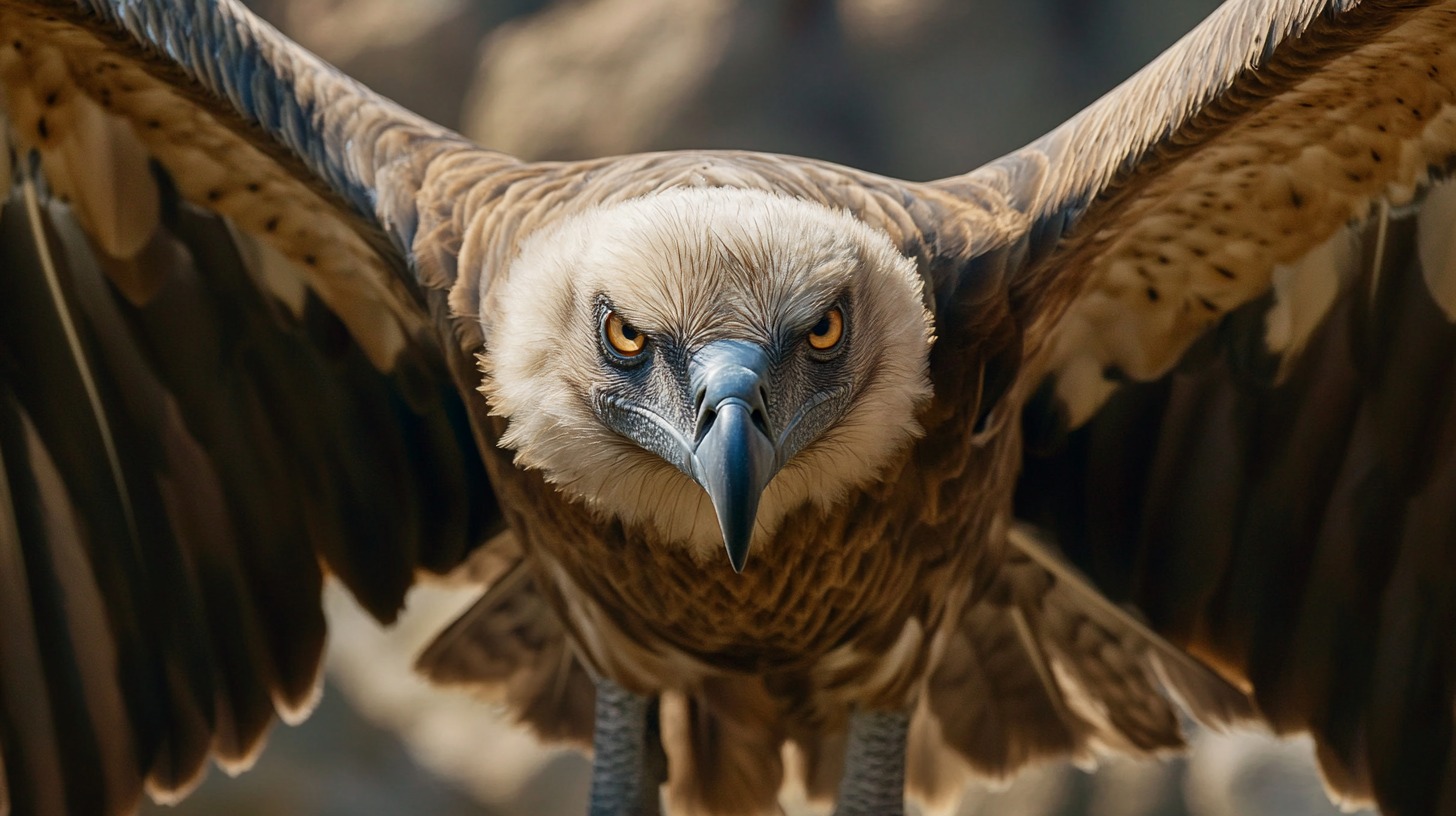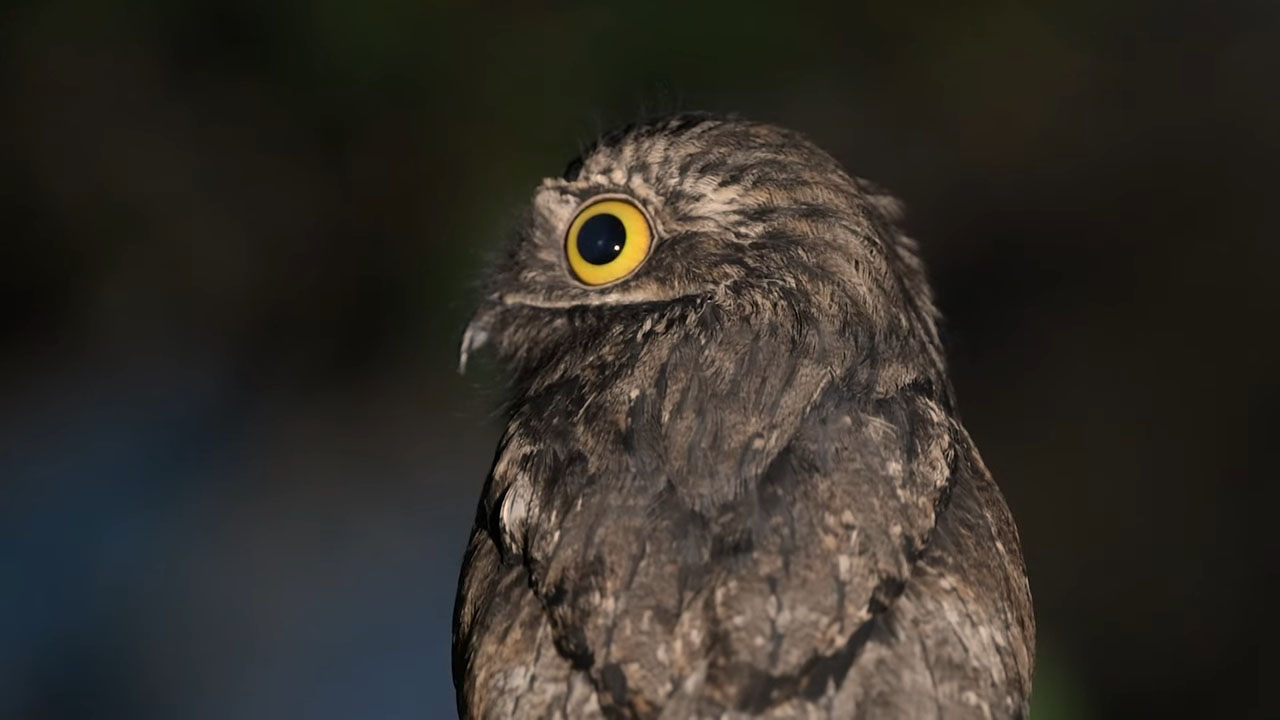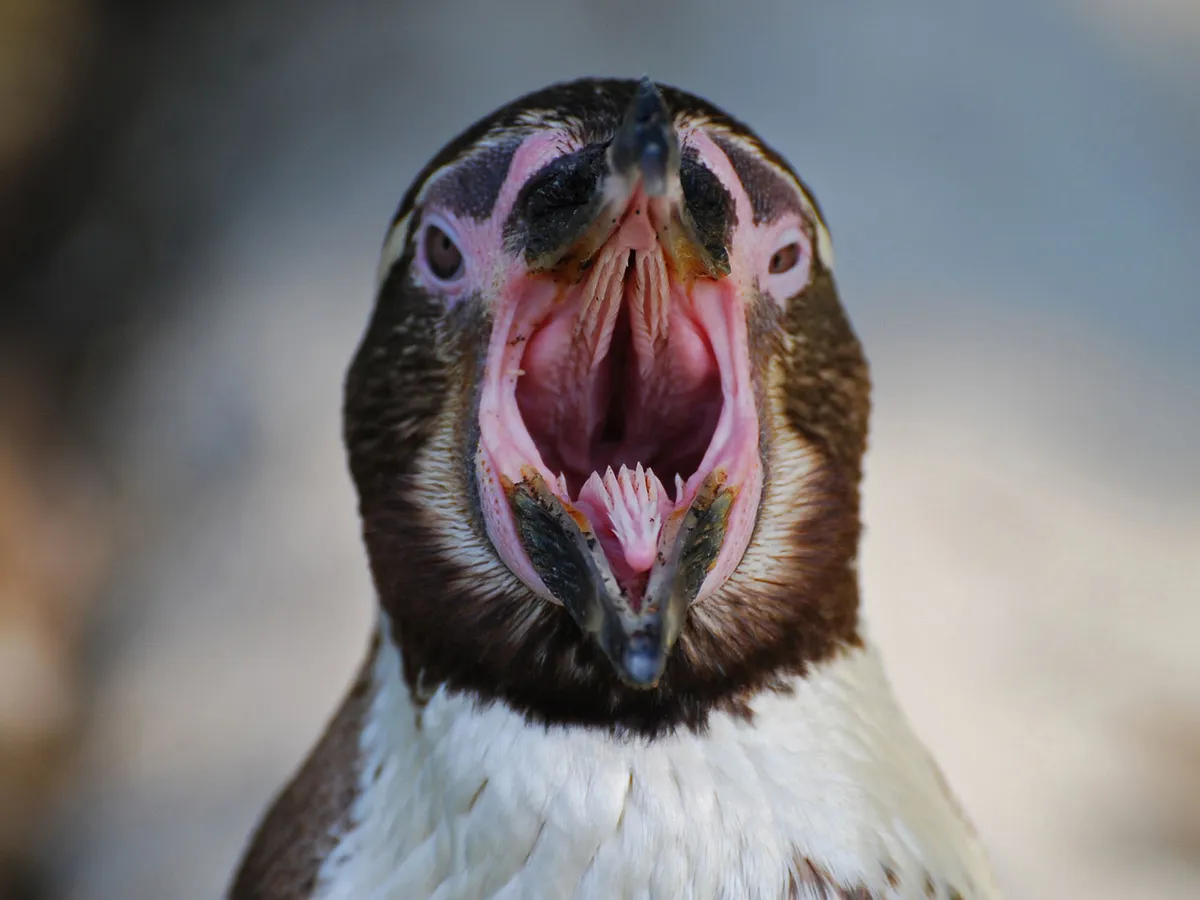
Share Post:
Birds are among the most diverse and adaptable species on Earth, with some possessing extraordinary flight abilities.
Certain species are capable of flying at altitudes that would be challenging for most other animals, demonstrating impressive endurance and specialized adaptations.
These high-flying birds span various families, from scavengers to migratory species, and their ability to soar through thin air showcases the wonders of avian evolution.
Let us talk about the highest flying birds out there.
15. Peregrine Falcon

- Flight Altitude: 13,000 feet (3,962 meters)
- Size: 15-20 inches (38-51 cm) in length, with a wingspan of 31-48 inches (79-122 cm)
- Region of Origin: Found globally, particularly in urban areas and coastal regions
The Peregrine Falcon is among the highest flying birds, renowned for its unmatched speed and agility, particularly during its high-speed dives, also known as stoops, to catch prey. This bird is known to reach speeds of up to 240 miles per hour (386 kilometers per hour) when diving, making it the fastest bird on the planet.
It has a broad geographic range, found across every continent except Antarctica. Peregrine Falcons are highly adaptable, residing in a variety of habitats such as urban areas, coastal cliffs, mountains, and open landscapes.
Despite their incredible speed, these birds have faced conservation challenges, primarily due to pesticide use, which led to significant population declines in the 20th century. However, conservation efforts have helped populations recover in many regions.
These falcons are also frequently trained in falconry due to their speed, intelligence, and trainability.
14. Lappet-Faced Vulture

- Flight Altitude: 15,000 feet (4,500 meters)
- Size: 40-45 inches (100-115 cm) in length, with a wingspan of about 8.5-9.5 feet (2.6-2.9 meters)
- Region of Origin: Africa and the Arabian Peninsula
The Lappet-Faced Vulture is one of the most dominant scavengers in Africa.
Known for its strong, powerful flight, it primarily resides in arid savannahs, open grasslands, and desert regions.
The vulture is distinguished by its large, bare head and large, fleshy folds of skin known as “lappets,” which give the bird its name.
As one of the largest vultures, it can often scare away smaller birds at a carcass, ensuring it gets the first choice of food.
Though these vultures are powerful and can soar at great heights, their populations have faced severe decline due to:
- Habitat loss
- Poisoning
- Declining food availability
Conservation efforts have been initiated to protect this crucial scavenger species, which plays a key role in preventing disease by consuming dead animals.
13. Andean Condor
- Flight Altitude: 15,000 feet (4,600 meters)
- Size: Wingspan of up to 10.5 feet (3.2 meters)
- Region of Origin: Andes Mountains, South America
The Andean Condor is one of the most iconic birds of the South American Andes. Known for its massive wingspan and majestic flight, this bird can often be seen gliding effortlessly on thermal currents that help it conserve energy.
It is a scavenger, feeding on carrion, which makes it an important part of the ecosystem in terms of cleaning up decaying matter.
With a wingspan that can reach over 10 feet (3 meters), the Andean Condor is one of the highest flying birds in the world. They prefer mountainous habitats, where they can take advantage of updrafts to stay aloft for hours without flapping their wings.
However, they have been facing threats from habitat loss and poisoning from carcasses laced with toxins intended for other predators.
12. White Stork

- Flight Altitude: 16,000 feet (4,900 meters)
- Size: 39-45 inches (100-115 cm) in length, with a wingspan of about 6-7 feet (1.8-2.1 meters)
- Region of Origin: Europe and Africa
The White Stork is a large, elegant bird that is often associated with myths and folklore, particularly in Europe where it is believed to bring good fortune. This bird is well known for its migratory behavior, traveling thousands of miles between Europe and Africa.
White Storks are highly visible during their migrations, and their large nests can often be found on rooftops, trees, and utility poles across rural areas of Europe.
White Storks are wading birds, typically feeding on small mammals, insects, and amphibians.
Their adaptability to urban environments has allowed them to thrive, though they are still vulnerable to habitat changes and the loss of wetlands in certain regions.
11. Golden Eagle

- Flight Altitude: 20,000 feet (6,100 meters)
- Size: 33-38 inches (84-96 cm) in length, with a wingspan of about 6-7.5 feet (1.8-2.3 meters)
- Region of Origin: Northern Hemisphere, including North America, Europe, and Asia
The Golden Eagle is one of the most formidable birds of prey, known for its sharp talons, powerful flight, and exceptional hunting skills.
These birds are found across the Northern Hemisphere, thriving in a variety of habitats, from mountains to deserts.
Golden Eagles primarily prey on small mammals, including rabbits and ground squirrels, but they are also known to hunt larger prey like foxes and even young deer.
Their flight capabilities are extraordinary, and they can reach high altitudes when soaring in search of food.
Golden Eagles are also known for their aggressive territorial behavior, and they can dive at high speeds to capture prey, similar to the Peregrine Falcon, though not quite as fast.
Interesting Fact: Currently, the global population of Golden Eagles is around 130,000.
10. Greater White-Fronted Goose

- Flight Altitude: 20,000 feet (6,100 meters)
- Size: 25-30 inches (64-76 cm) in length, with a wingspan of about 4.5 feet (1.4 meters)
- Region of Origin: Arctic, migrates to temperate regions in Europe, Asia, and North America
The Greater White-Fronted Goose is in the tenth place on our list of the highest flying birds.
It is a medium-sized migratory bird that breeds in the Arctic tundra and migrates to more temperate regions during the winter.
These geese are known for their strong, sustained flights and their ability to migrate over long distances.
They are named for the distinctive white patch on their forehead, which contrasts with their otherwise grayish-brown plumage.
During migration, Greater White-Fronted Geese often travel in large flocks, and their powerful wings allow them to fly at high altitudes over vast distances. They are also highly social birds, often seen in large groups, especially during wintering periods.
9. Bar-Tailed Godwit

- Flight Altitude: 20,000 feet (6,000 meters)
- Size: 14-16 inches (35-41 cm) in length, with a wingspan of about 2.5-3 feet (76-80 cm)
- Region of Origin: Alaska and migrates to New Zealand
The Bar-Tailed Godwit is renowned for undertaking the longest non-stop migration of any bird, traveling from Alaska to New Zealand without stopping for food, water, or rest.
These birds are built for endurance, with a streamlined body and strong wings that enable them to maintain flight over such great distances.
During migration, they can reach impressive altitudes, using tailwinds and other favorable weather conditions to conserve energy.
These godwits are often found in coastal mudflats and estuaries, where they feed on small invertebrates. They are highly specialized for long-distance flight, making them one of the most remarkable migratory species in the avian world.
8. Mallard Duck

- Flight Altitude: 21,000 feet (6,400 meters)
- Size: 20-26 inches (50-65 cm) in length, with a wingspan of about 3-3.5 feet (81-95 cm)
- Region of Origin: Northern Hemisphere, found in wetlands and urban areas
The Mallard Duck is one of the most widespread and recognizable duck species in the world.
They are known for their adaptability, thriving in both natural wetland habitats and urban environments.
Mallards are highly migratory, often traveling long distances during the winter months to find suitable feeding grounds.
Their flight altitude is surprisingly high for a duck species, enabling them to cover large distances efficiently.
Mallards are omnivorous, feeding on aquatic plants, insects, and small fish.
Their ability to adapt to a variety of habitats, including ponds, rivers, lakes, and even city parks, has allowed them to become one of the most successful bird species globally.
7. Common Swift
- Flight Altitude: 21,300 feet (6,500 meters)
- Size: 6-7 inches (16-18 cm) in length, with a wingspan of about 16-17 inches (42-45 cm)
- Region of Origin: Europe, migrates to sub-Saharan Africa
The Common Swift is a bird that spends the majority of its life in flight, even sleeping while airborne. Known for its acrobatic flight abilities, these birds are highly agile and fast, allowing them to catch flying insects mid-air.
They migrate between Europe and Africa, and their migratory journeys take them over vast distances at high altitudes.
Swifts have an incredible ability to conserve energy during flight, and their long, narrow wings help them glide effortlessly. They rarely land, except for breeding, and can cover immense distances throughout their lifetime.
Their flight patterns are often seen as darting and unpredictable, but they are highly efficient fliers.
6. Bearded Vulture
- Flight Altitude: 24,000 feet (7,315 meters)
- Size: 37-49 inches (94-125 cm) in length, with a wingspan of about 8-9.3 feet (2.5-2.8 meters)
- Region of Origin: High mountains of Europe, Asia, and Africa
The Bearded Vulture is one of the most fascinating birds of prey, known for its diet and behavior.
Unlike other vultures, it primarily feeds on bone marrow, dropping bones from great heights to break them open. Found in mountainous regions, this bird is perfectly adapted for high-altitude life.
Its large wingspan allows it to soar effortlessly in the thin mountain air, and its striking appearance, with a shaggy beard and red eyes, adds to its mystique.
The Bearded Vulture is an essential part of the mountain ecosystem, helping to clean up bones and carcasses that would otherwise accumulate. Despite its critical role, its populations have been affected by habitat loss and persecution.
5. Alpine Chough

- Flight Altitude: 26,500 feet (8,200 meters)
- Size: 15-17 inches (38-43 cm) in length, with a wingspan of about 2.5 feet (75-85 cm)
- Region of Origin: Alps, Himalayas, and other mountain ranges
The Alpine Chough is a bird species that thrives in the highest mountain ranges, such as the Alps and the Himalayas.
Known for its acrobatic flight, it performs daring aerial maneuvers, using its agility to navigate through rugged mountain terrain.
Alpine Choughs are highly social birds, often seen foraging in flocks at high altitudes, where they feed on insects, berries, and other small food sources.
This bird can survive in the thin air of high altitudes, often having its nests on cliffs and other inaccessible locations to avoid predators.
The Alpine Chough is a testament to avian adaptability, thriving in some of the harshest environments on Earth.
4. Whooper Swan
- Flight Altitude: 27,000 feet (8,200 meters)
- Size: 55-65 inches (140-165 cm) in length, with a wingspan of about 7-9 feet (2.1-2.75 meters)
- Region of Origin: Iceland, migrates to the British Isles and Europe
The Whooper Swan is a large, migratory swan that travels impressive distances between its breeding grounds in Iceland and its wintering grounds in the British Isles. These swans are known for their graceful appearance, with pure white feathers and a long neck.
During migration, they can reach high altitudes, allowing them to cover long distances efficiently.
Whooper Swans are highly vocal, producing a distinctive trumpet-like call. They are also known for their fast flight, especially during migration.
Despite their size, they are capable of flying at speeds of up to 55 miles per hour (90 kilometers per hour).
3. Bar-Headed Goose
- Flight Altitude: 29,000 feet (8,800 meters)
- Size: 28-30 inches (71-76 cm) in length, with a wingspan of about 4.5-5.5 feet (1.4-1.7 meters)
- Region of Origin: Central Asia, migrates over the Himalayas to India
The Bar-Headed Goose is one of the most remarkable high-altitude fliers, regularly crossing the Himalayan mountain range during its migratory journey.
These geese are accustomed to extreme altitudes, with specialized hemoglobin that allows them to absorb oxygen more efficiently in thin air.
Their migration route takes them over some of the highest peaks in the world, including Mount Everest.
Known for their endurance, Bar-Headed Geese are capable of flying at altitudes where oxygen levels are minimal. They are also highly social birds, often flying in large flocks during migration.
Their ability to survive and thrive in such extreme conditions makes them one of the most awe-inspiring migratory birds.
2. Common Crane

- Flight Altitude: 33,000 feet (10,000 meters)
- Size: 40-52 inches (100-130 cm) in length, with a wingspan of about 6-7.5 feet (1.8-2.3 meters)
- Region of Origin: Northern Europe and Asia, migrates to Africa and the Middle East
The Common Crane is a large, stately bird known for its migratory journeys over the Himalayan mountain range. These are among the highest flying birds and are often seen in large, noisy flocks, flying in V-formations to conserve energy.
With their long necks and legs, they cut an impressive figure in the sky, and their distinctive red crown adds to their striking appearance.
Common Cranes are highly social and have a rich array of vocalizations. Their flight patterns take them across challenging terrain, and they are adept at using thermal currents to stay aloft without expending much energy.
Cranes are also symbols of good fortune in many cultures, revered for their grace and beauty.
1. Rüppell’s Griffon Vulture
- Flight Altitude: 37,000 feet (11,300 meters)
- Size: 41-43 inches (105-110 cm) in length, with a wingspan of about 8-9 feet (2.6-2.8 meters)
- Region of Origin: East Africa and the Sahara Desert
Rüppell’s Griffon Vulture holds the record for the highest recorded flight altitude of any bird, reaching an astounding 37,000 feet (11,300 meters).
The region where you can find them is East Africa and the Sahara where these vultures can sustain the harsh environments of the African savannahs.
They have incredibly strong respiratory systems, enabling them to thrive in low-oxygen environments at high altitudes.
These vultures play a crucial role in their ecosystems by scavenging carcasses, which helps prevent the spread of disease.
Despite their importance, they face threats from habitat loss and poisoning, which has led to significant declines in their populations.
Summary
The world’s highest flying birds are marvels of adaptation and endurance, with each species uniquely equipped to conquer the challenges of high-altitude flight.
Their ability to fly at such extreme heights showcases the incredible diversity of avian life and the power of evolution to overcome environmental obstacles.
Related Posts:
- Top 10 Migratory Birds in The World You Need to Know About
- Top 10 Birds With Blue Wings You Can Spot in the Wild
- 20 Stunningly Large White Birds (Photos, Facts, And Sizes!)
- Top 10 Largest Cat Breeds in the World - Feline World Giants
- Top 10 Most Beautiful Parrots In The World
- Top 10 Heaviest Animals In The World











